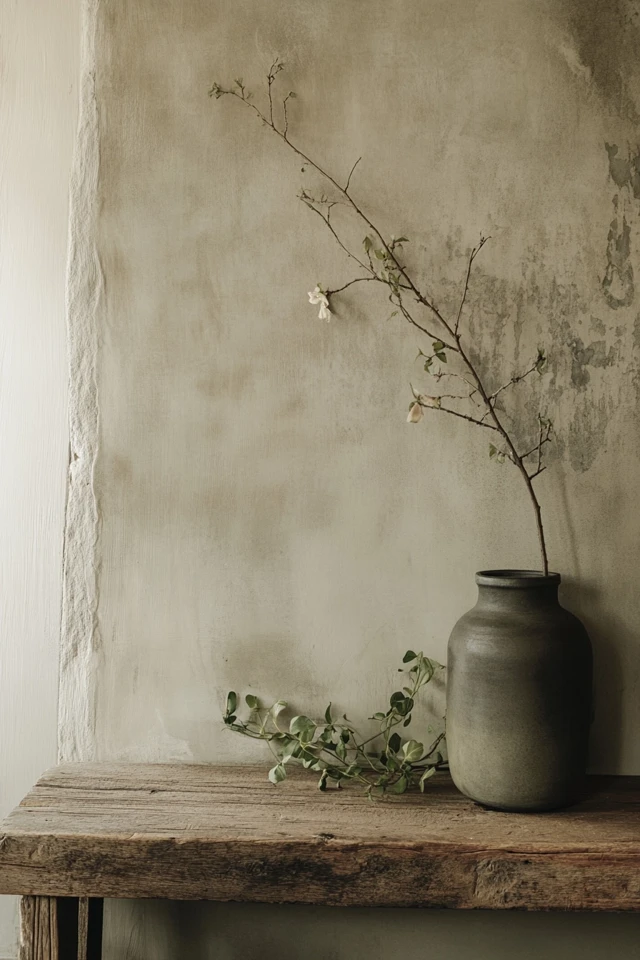Introduction
Minimalist design is celebrated for its clean lines, neutral color palettes, and a “less is more” philosophy. But without thoughtful details, it can sometimes feel stark or overly sterile. That’s where texture comes in. Subtle textures add depth, warmth, and interest to minimalist spaces without detracting from their simplicity. Whether it’s a woven throw, a matte ceramic vase, or a lightly textured wall, these details elevate a minimalist design, making it feel inviting and dynamic.
When I first embraced minimalist design, I was thrilled with how airy and open my home felt, but something was missing—it felt flat. Adding texture through natural materials, soft textiles, and understated patterns transformed the space. Suddenly, my minimalist home felt cozy and personal without losing its simplicity.
In this post, I’ll show you how to incorporate subtle textures into minimalist spaces. From furniture and decor to walls and floors, you’ll learn practical tips to create a balanced, serene space that’s full of quiet character.
Why Texture Is Important in Minimalist Design
1. Adds Depth and Dimension
Texture prevents minimalist spaces from feeling flat or one-dimensional by creating visual and tactile interest.
2. Enhances Warmth
Soft and natural textures make minimalist interiors feel cozy and welcoming.
3. Maintains Simplicity
Subtle textures add variety without cluttering or complicating the space.
4. Draws Attention to Details
Texture highlights the intentionality behind minimalist design, ensuring every element feels purposeful.
How to Add Subtle Texture to Minimalist Spaces
1. Incorporate Natural Materials
Nature-inspired materials like wood, stone, and rattan add organic texture to minimalist interiors.
- Wood: Use raw or lightly finished wood for furniture and decor. A reclaimed wood coffee table or oak shelving adds warmth.
- Stone: Incorporate marble, concrete, or slate in countertops, accent tables, or planters.
- Rattan and Wicker: A rattan chair or woven pendant light adds a touch of understated texture.
2. Layer Soft Textiles
Textiles are one of the easiest ways to bring texture into minimalist spaces.
- Throws: Add a knit or woven throw to a sofa or bed for softness.
- Pillows: Choose linen, velvet, or wool pillow covers with subtle patterns or embroidery.
- Rugs: Opt for natural fiber rugs like jute, sisal, or wool with a low-pile texture.
3. Use Textured Wall Treatments
Walls are an often-overlooked opportunity to add texture.
- Paint Finishes: Use matte or eggshell paint for a velvety look.
- Plaster or Limewash: Add depth with textured wall finishes that reflect light beautifully.
- Wood Paneling: Install vertical slats or shiplap for a modern, minimalist touch.
4. Choose Tactile Furniture
Furniture can double as a source of texture while maintaining a minimalist aesthetic.
- Upholstered Furniture: Choose linen, boucle, or textured leather for sofas and chairs.
- Woven Details: Look for furniture with cane or wicker accents.
- Natural Finishes: Opt for raw or matte finishes on wood and metal pieces.
5. Add Subtle Patterns
Minimalist design doesn’t have to mean completely pattern-free.
- Geometric Patterns: Use understated patterns in rugs, pillows, or throws. Stick to monochromatic or tone-on-tone designs.
- Herringbone or Chevron: Incorporate these patterns in wood floors or backsplashes for subtle interest.
- Layered Lines: Choose textiles or decor with embossed or etched line patterns.
6. Incorporate Matte and Soft Finishes
Shiny surfaces can feel cold in minimalist spaces. Matte finishes create a soft, elegant look.
- Ceramics: Use matte ceramic vases, bowls, or planters for decor.
- Metal Accents: Opt for brushed or powder-coated metals over glossy finishes.
- Paint and Furniture: Choose matte finishes for walls, cabinetry, and furniture.
7. Use Glass and Mirrors for Subtle Contrast
Glass and mirrors can introduce texture through reflections and transparency.
- Frosted Glass: Use frosted glass in lighting fixtures or decorative panels.
- Rippled or Etched Glass: Incorporate these finishes in cabinet doors or tabletops.
- Minimal Mirrors: Choose frameless or thin-framed mirrors to reflect light and add depth.
8. Bring in Greenery
Plants and flowers add natural texture and life to minimalist spaces.
- Leafy Greens: Choose plants with textured leaves, like ferns or rubber plants.
- Neutral Planters: Use ceramic, concrete, or woven planters to complement your decor.
- Dried Botanicals: Pampas grass or dried eucalyptus adds texture with a muted color palette.
9. Play With Light and Shadow
Texture doesn’t have to be physical—use light to create visual texture.
- Sheer Curtains: Diffuse natural light for a soft, glowing effect.
- Layered Lighting: Use wall sconces, table lamps, and floor lamps to create depth and shadows.
- Architectural Features: Highlight textured walls or furniture with accent lighting.
10. Curate Decorative Accessories
Keep decor minimal, but focus on pieces with texture.
- Books: Stack books with fabric or embossed covers on tables or shelves.
- Bowls and Trays: Choose decor made from stone, wood, or metal.
- Candles: Use pillar or tapered candles with ribbed or smooth finishes.
Picture Gallery
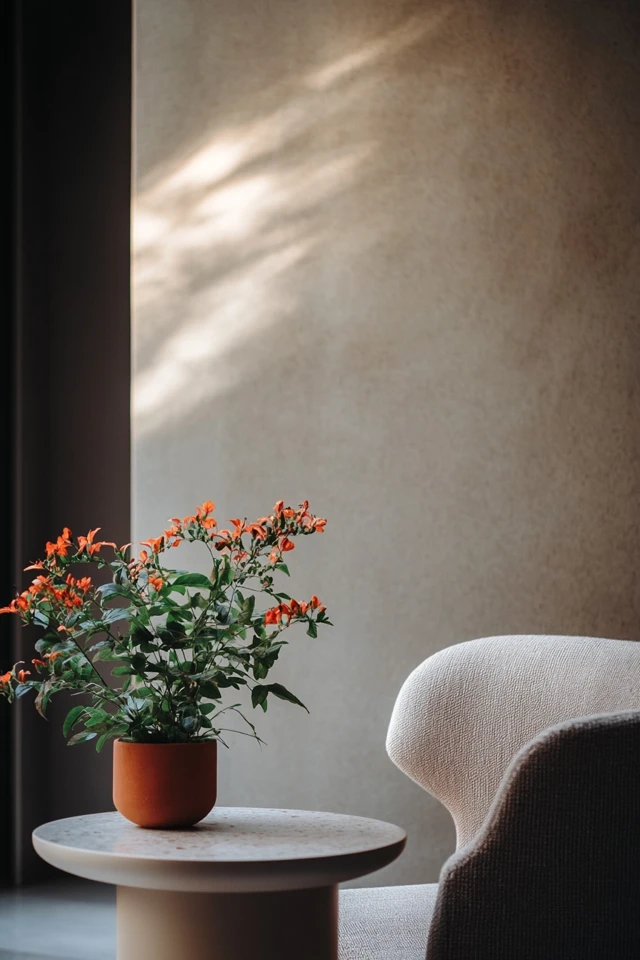
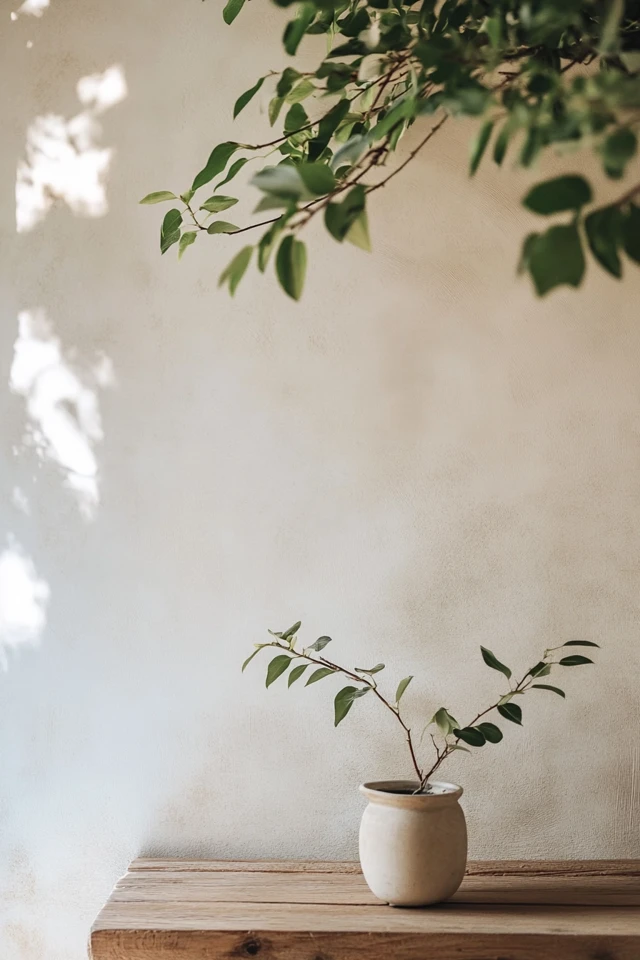
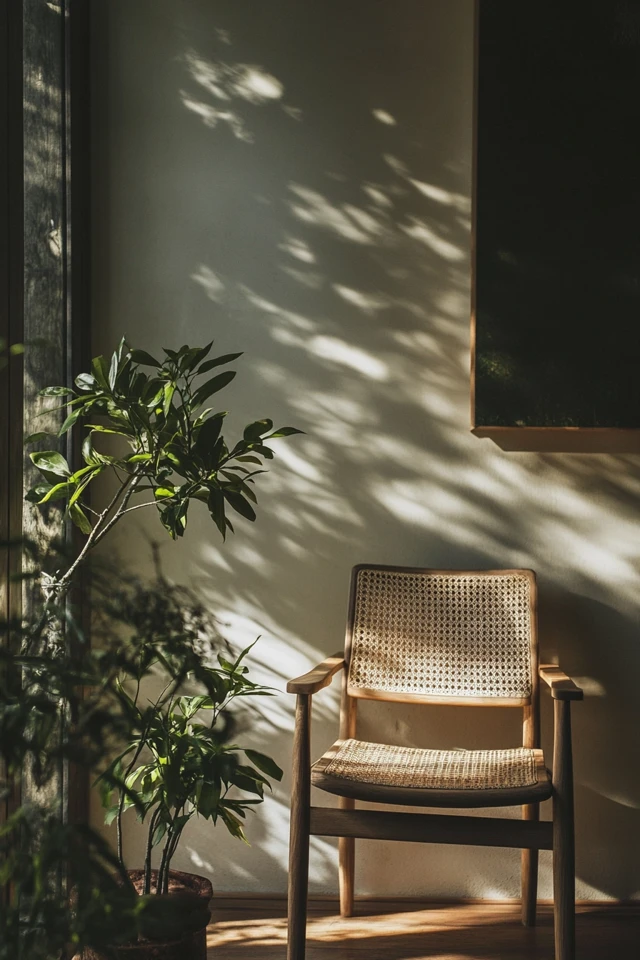
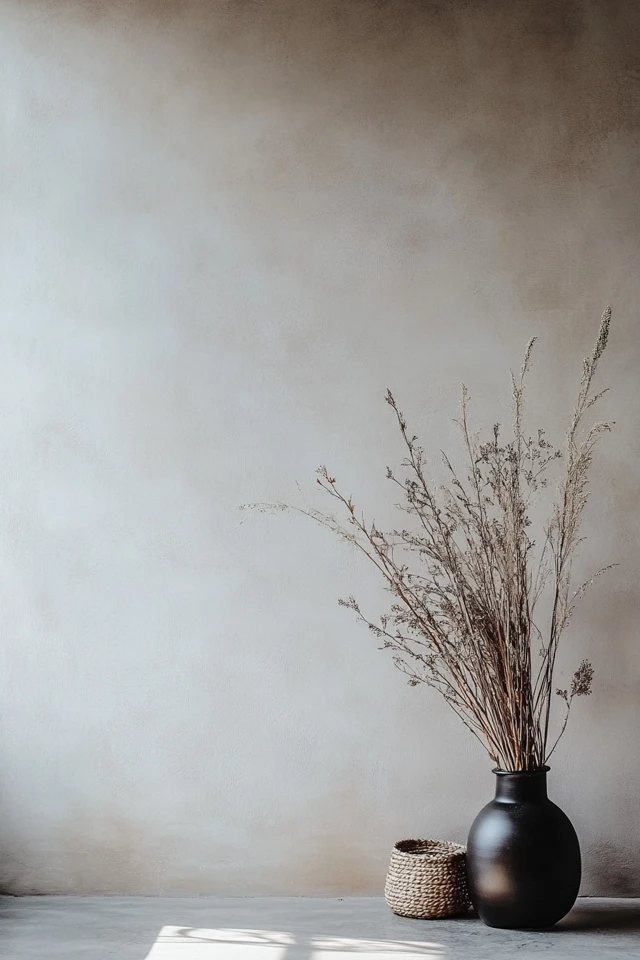
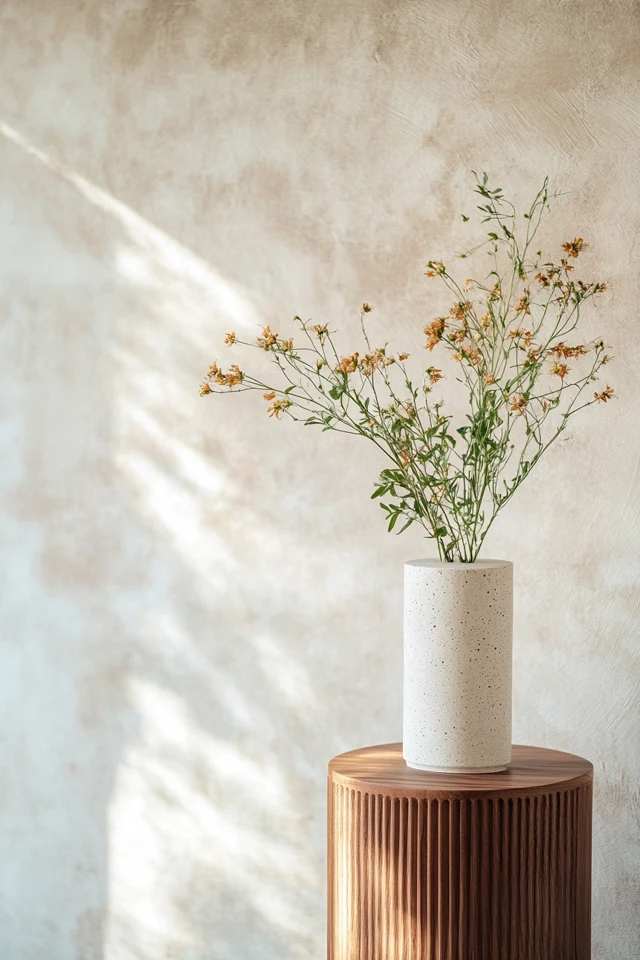
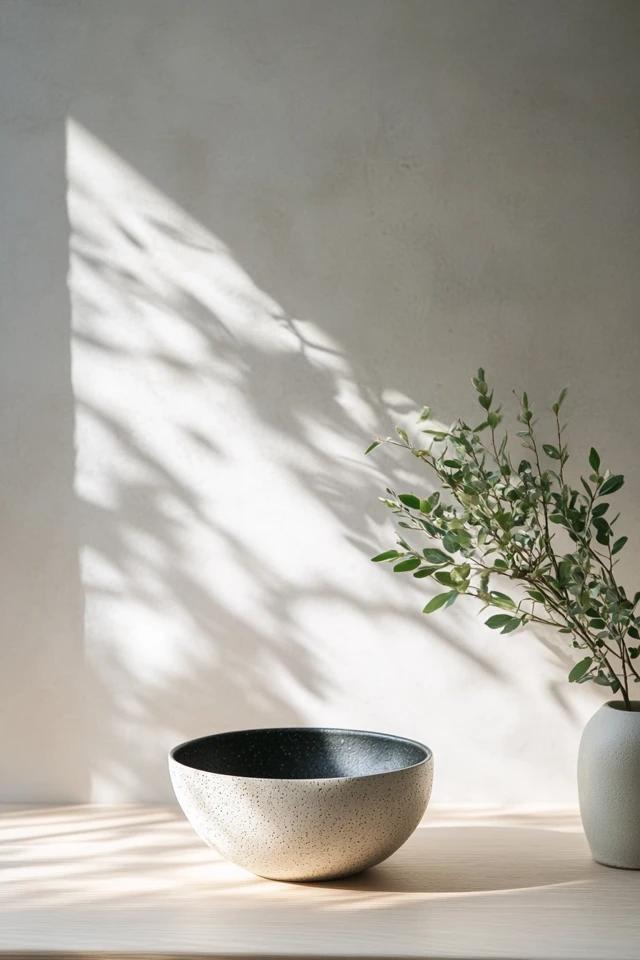

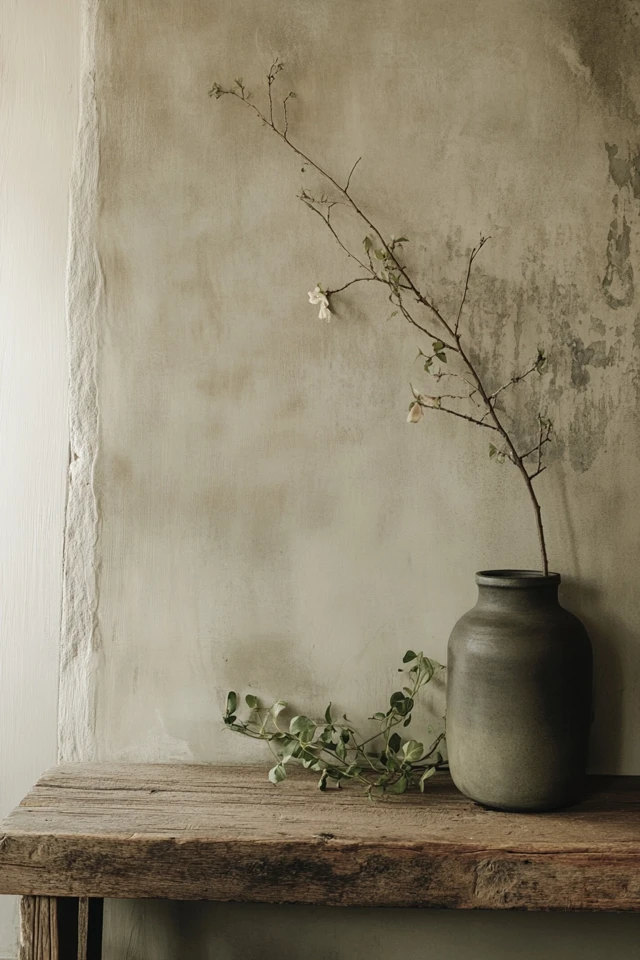
Tips for Adding Texture Without Overwhelming the Space
1. Stick to a Neutral Palette
Let textures stand out by keeping the color palette neutral and cohesive.
2. Layer Gradually
Introduce textures one layer at a time, starting with larger pieces like rugs and furniture, then adding smaller decor.
3. Focus on Quality Over Quantity
A few well-chosen textured elements are more impactful than an overload of accessories.
4. Balance Smooth and Textured Surfaces
Contrast textured items with smooth surfaces to maintain balance and simplicity.
5. Highlight Key Areas
Focus textures in specific areas, like a cozy corner or a feature wall, to avoid spreading them too thin.
Conclusion
Adding subtle texture to minimalist spaces is the key to creating interiors that feel warm, layered, and inviting without compromising simplicity. Whether it’s through natural materials, soft textiles, or thoughtfully chosen decor, texture brings depth and character to a minimalist design.
I’ve seen how these small details can make a big difference—turning a bare room into a serene, stylish sanctuary. By incorporating textures that resonate with your personal style, you can create a space that’s both visually dynamic and effortlessly minimalist.
So, start small: a woven throw here, a textured planter there. Before you know it, your minimalist space will feel like a true reflection of balance and beauty.
FAQ
Can I add texture to a minimalist space without changing the color palette?
Yes! Stick to neutral tones and use a variety of materials like wood, stone, and linen to introduce texture while keeping the palette cohesive.
What’s the easiest way to add texture to a minimalist bedroom?
Start with textiles—add a textured duvet cover, throw pillows, and a soft area rug for instant coziness.
Are textured walls too bold for minimalist spaces?
Not at all! Subtle treatments like plaster, limewash, or wood slats can add depth without overwhelming the design.
How do I avoid making a minimalist space feel cluttered with textures?
Choose a few key textured elements and balance them with smooth, simple surfaces to maintain the minimalist aesthetic.
What plants work best for adding texture to minimalist interiors?
Plants like monstera, snake plants, ferns, or pampas grass add subtle texture while staying low-maintenance.

